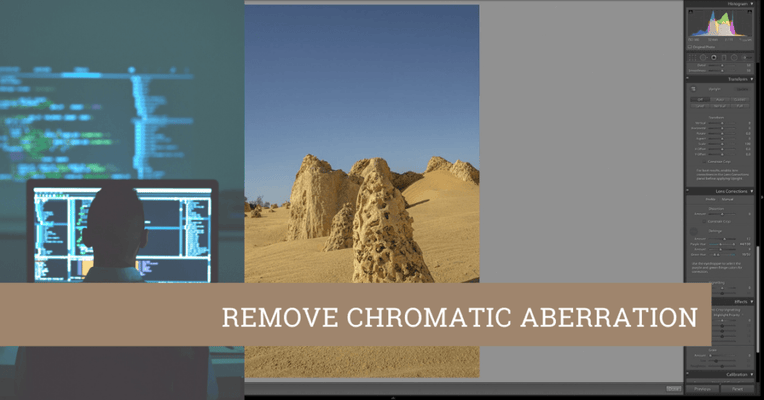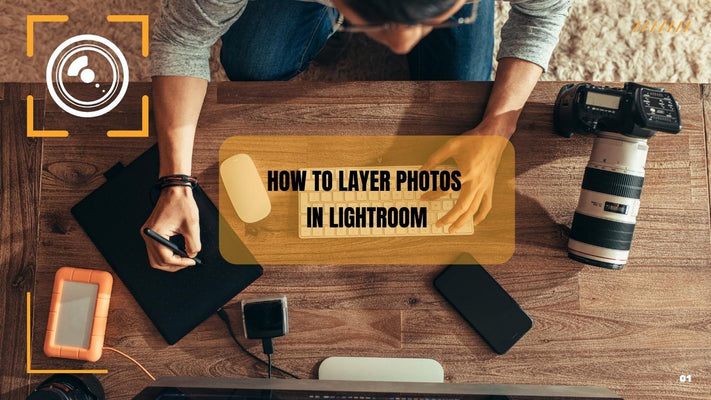How to rotate crop in Lightroom?
Rotating and Cropping in Adobe Lightroom: An In-depth Guide
Adobe Lightroom is a powerful photo editing tool used by photographers of all levels worldwide. It's a versatile software that offers a comprehensive suite of features, allowing you to alter, enhance, and transform your photographs to achieve your desired effect. One such feature is the ability to rotate and crop your images, which can drastically change the composition and overall feel of your photos. This guide provides an in-depth look at how to rotate and crop images in Adobe Lightroom.
Why Rotate and Crop?
Before we dive into the specifics, let's explore why you might want to rotate or crop your images.
- Composition: Cropping allows you to adjust the frame of your image, focusing on the most important elements and eliminating any distracting ones. Likewise, rotating your image can change the perspective, providing a different view or correcting an unbalanced shot.
- Aspect ratio: Whether you need to fit a specific format for printing, or adjust your photo for optimal display on social media, cropping can help you adjust your image to the required aspect ratio.
- Orientation: A photo taken in portrait orientation might work better in landscape, or vice versa. Rotating and cropping can help you adjust the orientation of your photo to better suit your needs.
- Correction: Sometimes, despite your best efforts, a photo may come out slightly tilted. The rotate tool can help you correct this and straighten your image.
How to Rotate and Crop in Adobe Lightroom
Let's walk through the steps to rotate and crop your images in Adobe Lightroom:
- Open the Develop Module: Once you have Adobe Lightroom open and your chosen photo imported, switch to the Develop module by clicking on 'Develop' at the top right of the window.
- Select the Crop Overlay Tool: On the right-hand panel, find the toolbox just below the histogram. Click on the first tool, which looks like a square with dashed lines along its edges - this is the Crop Overlay tool.
- Rotate Your Image: Once the Crop Overlay tool is activated, you'll see a grid overlay on your image. To rotate your image, move your cursor to the corner of the image. The cursor will change to a curved, double-headed arrow. Click and drag to rotate your image clockwise or counterclockwise.
- You can also use the Angle slider or text box in the Crop & Straighten panel on the right to precisely rotate your image by a specific degree.
- Crop Your Image: To crop your image, place your cursor on one of the edges or corners of the crop frame (the box that appeared when you activated the Crop Overlay tool). Click and drag inwards to crop. If you want to maintain the current aspect ratio, make sure the padlock icon next to the Aspect box in the Crop & Straighten panel is locked.
- Adjust Aspect Ratio: If you want to change the aspect ratio of your crop, click on the dropdown menu next to 'Aspect' in the Crop & Straighten panel. Choose one of the preset aspect ratios, or select 'Enter Custom' to define your own.
- Finalize the Crop: Once you are happy with your adjustments, press Enter or click the 'Done' button under the photo to apply the crop and rotation.
Remember, all edits in Lightroom are non-destructive, which means you can always revisit and revise your adjustments without damaging the original image file.
Rotating and cropping may seem like minor edits, but these changes can have a significant impact on the composition, balance, and aesthetic of your photos. By mastering these simple tools in Adobe Lightroom, you can take greater control over your image editing process and make your photos truly shine.
Tips and Tricks for Better Rotating and Cropping
While the basic functionality of rotating and cropping is straightforward, there are a few additional tips and tricks that you can use to enhance your experience and outcome with these tools in Lightroom.
- Use the Auto Angle tool: If you're trying to straighten a photo that's been slightly tilted, the Auto Angle tool can be a lifesaver. It's located in the Crop & Straighten panel, just click on the ‘Auto’ button. Lightroom will analyze the photo and automatically rotate the image to straighten it.
- Constrain to Image: When rotating your image, you may find that corners of your photo end up outside the crop frame, resulting in white or black triangles in the corners. If you don't want this, ensure the 'Constrain to Image' option is checked. This is located in the Crop & Straighten panel and will automatically crop these areas out.
- Use Grid Overlay for Composition: When the Crop Overlay tool is active, a grid will appear on your image. This grid is useful for aligning the elements of your photo and can be particularly helpful if you're using the rule of thirds for your composition.
- Fine-tune your crop: If you're struggling to get your crop frame exactly where you want it, hold down the Alt (Windows) or Option (Mac) key while clicking and dragging your crop. This will slow down the movement, allowing you to fine-tune your crop placement.
- Reset Your Crop: If you're not happy with your crop or rotation and want to start over, just double click inside the crop frame. This will reset your crop to its original state.
Rotating and cropping your images in Lightroom is a relatively simple process, but it's an essential skill for any photographer. With these techniques, you can drastically improve the composition, balance, and feel of your images, creating photos that truly captivate your viewers.
This guide is aimed to help you understand and utilize the rotation and cropping tools in Lightroom more effectively. As with any tool, the key is to experiment and practice until you're comfortable with these features. Once mastered, you'll find that these simple tools are indeed powerful allies in your image editing arsenal.
Whether you're a seasoned professional or a photography enthusiast, the capabilities of Adobe Lightroom can greatly enhance your photographic work. By using these features to their fullest, you can bring your creative vision to life and produce work that is uniquely yours. Happy editing!












